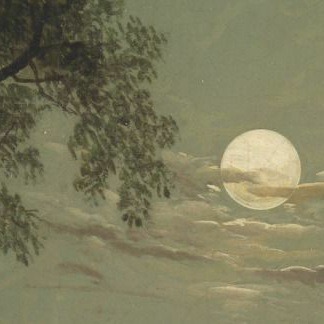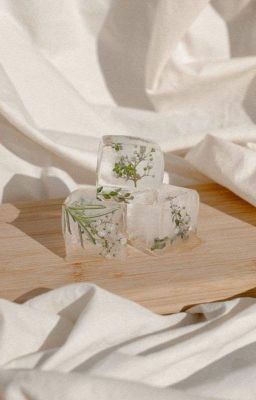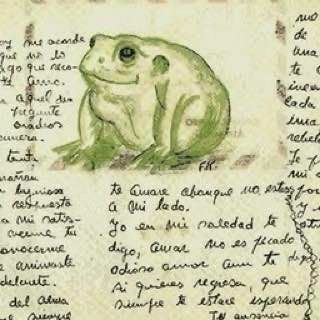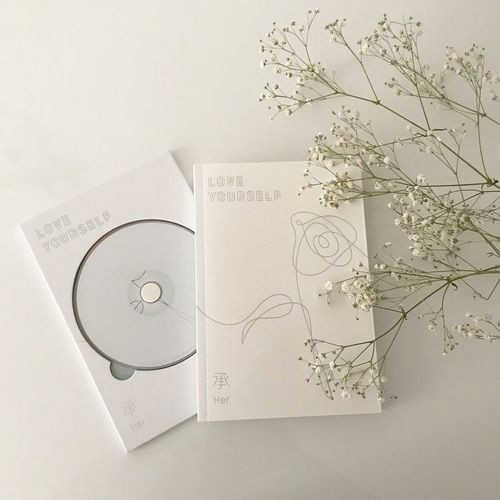Zoë Lianne, "Erasure"
Zoë Lianne, "Erasure"


Mary Oliver, "Felicity"

Emily Bronte, "Wuthering Heights"
More Posts from Moonlitmirror and Others
Tuesday, 20th July 2021
At night in quiet solitude of the passing day
I turn the yellowing pages of the waxing moon
Molten in a burning light to show its age
And cast in pooling stains of inky blue
It glows in flickers of a dying candle light
Wrapped in a purple wreath, delicately crowned
An encroaching darkness consuming the night
It dims its eyes to rest amongst the drowned
Passing Thoughts
I’m sat here at the kitchen countertop
my laptop on a chopping board
watching my mother's jam pot
simmer away the plums and sugar -
I’m here to stop it boiling over.
It has already done it once
the sticky pink liquid has become
stained glass on the hob cooker
it hasn’t reduced much
so I might be here just a little while longer









16th century flower illustration PNGs.
(source: Book of Flower Studies, ca. 1510–1515)
Glass slippers, yes... SLIPPERS
Whenever the “verre VS vair” debate is brought up, glass shoes or fur shoes, something is pointed out. It is extremely funny that people seem unwilling to accept the “glass” part of the shoes (which in itself is not something weird, especially since as other people pointed out there is a lot of glass in fairytales, up to entire glass mountains) ; but blindly accept and never contest a much more puzzling and weirdest part of the item. “Slippers”. Glass “slippers”.
In French “pantoufle de verre”. The shoes you see in every modern Cinderella iteration are not “pantoufles”. They’re high-heeled shoes, they’re shoes to go outdoor, they are not “slippers”/”pantoufles”. And the very decision of making Cinderella wear “pantoufles” to her ball seems very strange…
A “pantoufle”/”slipper” (for the sake of simplicity I’ll use the French pantoufle from now on) is not a ball shoe, and certainly a strange choice to go to the ball. A pantoufle is a comfortable “inside shoe”, worn usually inside the house (or sometimes even just in bedrooms), and often the pantoufle was opened up at the back, leaving the heel uncovered. That’s the kind of slipper the 1950s dad wears alongside his pajama robe when he gets out of the house with a pipe in his mouth to go searching for his journal. A quite unelegant and unusual shoewear for a formal ball organized by a prince.
Maybe we can get some clues from looking at the history of the pantoufle? Let’s see…
The French pantoufle was originally inspired by the Arabian “babouche” (you know, the archetypal “Arabian” shoe you’ll see everyone wear in One Thousand and One Nights). Somehow the fashion of the “babouche” reached France in its Middle-Ages and became there “pantoufles”. Originally pantoufle were peasant and low-class shoes: made out of felt, they were not shoes per se but things people put on their feet when they wore clogs (what in France we call “sabots” shoes) so that it would be much more confortable (”sabots” being thick and hard wooden shoes). So basically it started out as the peasant equivalent of socks.
But by the 15th century the “pantoufle” suddenly reached the upper-class where it became a true fashion, every gentleman had to wear some, usually made of silk or thin leather (those were costly shoes). These “pantoufles” were notably worn with a sole made of either wood or cork (”liège” as we call it in France), to avoid the pantoufle being dirtied by the muddy ground.
In the 16th century, a new change to the “pantoufle” was made (which notably became confused and conflicted with another type of slipper known as “mule”). The “pantoufle” became feminized, to the point that it became at one point an exclusively “feminine” fashion, the “pantoufle” becoming womanswear.
Though it had exceptions: notably under the rule of Louis 14 (who was the king under which lived Perrault and whom he served), the servants of the royal palace had to wear “pantoufles” with felt soles for two reasons. 1) So that the sound of their constant travellings throughout the palace wouldn’t disturb the upper-class. 2) So that their shoes wouldn’t damage the floor.
It was at the end of the 17th century (which is also the time Perrault wrote and published his fairytales) that women started to use “pantoufle” as proper shoes, not just glorified socks. They noted how light and practical and easy to slip on and wear those things were, and so they wore them all on their own - but only inside their house or in their private chambers, due to how fragile they were. As I said, “inside shoes”.
So in conclusion, we know that in Perrault’s time the “pantoufle” were feminine footwear, traditional footwear of the royal court (but for servants), and fashionable enough to be worn on their own… But at the same time it was still an “inside shoe” of comfort and rest, and still stays a very unusual item to go to a royal ball with. They certainly were not easy shoes to dance with (not even counting how they were made of glass!).
It is probably just another one of those details that Perrault liked to add to his fairytales just for the sake of having a form of humor in there. But it is fascinating to see how the “pantoufle”/”slipper” concept was rejected through time - in fact, even when people in the 19th century debated the “verre or vair” topic, they often called the shoes “soulier” (which is a type of outdoor shoe much closer to the ones popularized by modern adaptations than the indoor “slippers”, bedroom “pantoufles”).
All in all I can’t give you an answer, but it is an interesting detail that not many people took care of looking at (from my knowledge) ; or if they did, it was themselves to only point out how somehow nobody seemed bothered by the fact the shoes were slippers.
'The earliest Cinderella figures emerged within aristocratic milieus. Basile’s was prepared for academicians or their highly placed friends and acquaintances; Perrault’s was written for a princess of the blood; and d’Aulnoy’s was crafted for fellow salonières. In all three seventeenth-century tellings, Cinderella reproduced and represented aspects of aristocratic imaginaries.'
Ruth B. Bottigheimer, 'Cinderella: The People's Princess' in Cinderella across Cultures, ed. M. H. D. Rochere (Detroit: Wayne State University Press, 2016).

Strained and wanting
I simmer below the surface,
a thousand pieces of light
stretched thin and glaring
piece together my skin,
thoughts rumbling through
troubled waters, fine lines
and wasted moments,
preoccupied with nothing









Be kind to yourself, you are deserving of love ♡
-
 hopelesspilgrim liked this · 4 weeks ago
hopelesspilgrim liked this · 4 weeks ago -
 rowegreentree liked this · 4 weeks ago
rowegreentree liked this · 4 weeks ago -
 pluiexu liked this · 1 month ago
pluiexu liked this · 1 month ago -
 sanktaofthe7seas liked this · 1 month ago
sanktaofthe7seas liked this · 1 month ago -
 olliemcxi liked this · 1 month ago
olliemcxi liked this · 1 month ago -
 joon1uvr liked this · 1 month ago
joon1uvr liked this · 1 month ago -
 babynightmareduck liked this · 1 month ago
babynightmareduck liked this · 1 month ago -
 allthingsabouther reblogged this · 2 months ago
allthingsabouther reblogged this · 2 months ago -
 allthingsabouther liked this · 2 months ago
allthingsabouther liked this · 2 months ago -
 perfect-ly-average reblogged this · 2 months ago
perfect-ly-average reblogged this · 2 months ago -
 perfect-ly-average liked this · 2 months ago
perfect-ly-average liked this · 2 months ago -
 nihiilo liked this · 3 months ago
nihiilo liked this · 3 months ago -
 fiiooonnnna liked this · 3 months ago
fiiooonnnna liked this · 3 months ago -
 louvingyouv liked this · 3 months ago
louvingyouv liked this · 3 months ago -
 daff-0dil liked this · 3 months ago
daff-0dil liked this · 3 months ago -
 enchantales liked this · 3 months ago
enchantales liked this · 3 months ago -
 spoiler-warning liked this · 4 months ago
spoiler-warning liked this · 4 months ago -
 avejayee liked this · 4 months ago
avejayee liked this · 4 months ago -
 iamjustagorl liked this · 5 months ago
iamjustagorl liked this · 5 months ago -
 sleepy--ghost liked this · 5 months ago
sleepy--ghost liked this · 5 months ago -
 ringititoito liked this · 5 months ago
ringititoito liked this · 5 months ago -
 sublimecherryblossomobservation liked this · 6 months ago
sublimecherryblossomobservation liked this · 6 months ago -
 nirvana-struck reblogged this · 6 months ago
nirvana-struck reblogged this · 6 months ago -
 ezrizu liked this · 6 months ago
ezrizu liked this · 6 months ago -
 tadhannahj liked this · 6 months ago
tadhannahj liked this · 6 months ago -
 walllflowaa liked this · 6 months ago
walllflowaa liked this · 6 months ago -
 kaleb-is-definitely-sane reblogged this · 6 months ago
kaleb-is-definitely-sane reblogged this · 6 months ago -
 kaleb-is-definitely-sane liked this · 6 months ago
kaleb-is-definitely-sane liked this · 6 months ago -
 laurenschs reblogged this · 6 months ago
laurenschs reblogged this · 6 months ago -
 astraxinfinite liked this · 6 months ago
astraxinfinite liked this · 6 months ago -
 oaglle liked this · 7 months ago
oaglle liked this · 7 months ago -
 parallax-priest reblogged this · 7 months ago
parallax-priest reblogged this · 7 months ago -
 parallax-priest liked this · 7 months ago
parallax-priest liked this · 7 months ago -
 cruelestaprileverr liked this · 7 months ago
cruelestaprileverr liked this · 7 months ago -
 belljar16 liked this · 7 months ago
belljar16 liked this · 7 months ago -
 ostagars liked this · 7 months ago
ostagars liked this · 7 months ago -
 mrsmittens reblogged this · 7 months ago
mrsmittens reblogged this · 7 months ago -
 dreamingofthingstocome liked this · 7 months ago
dreamingofthingstocome liked this · 7 months ago -
 its-holden-caulfield reblogged this · 7 months ago
its-holden-caulfield reblogged this · 7 months ago -
 its-holden-caulfield liked this · 7 months ago
its-holden-caulfield liked this · 7 months ago -
 saturniancrab liked this · 7 months ago
saturniancrab liked this · 7 months ago -
 nnothinghere liked this · 7 months ago
nnothinghere liked this · 7 months ago -
 automatedserotonin liked this · 8 months ago
automatedserotonin liked this · 8 months ago -
 thehoneyeater liked this · 8 months ago
thehoneyeater liked this · 8 months ago -
 androgynousmushroomlad liked this · 8 months ago
androgynousmushroomlad liked this · 8 months ago -
 michachacha liked this · 8 months ago
michachacha liked this · 8 months ago -
 auzlon liked this · 8 months ago
auzlon liked this · 8 months ago -
 goddamnitimacrackednut reblogged this · 8 months ago
goddamnitimacrackednut reblogged this · 8 months ago -
 roughlifeofchelsea liked this · 8 months ago
roughlifeofchelsea liked this · 8 months ago

Historian, writer, and poet | proofreader and tarot card lover | Virgo and INTJ | dyspraxic and hypermobile | You'll find my poetry and other creative outlets stored here. Read my Substack newsletter Hidden Within These Walls. Copyright © 2016 Ruth Karan.
179 posts


